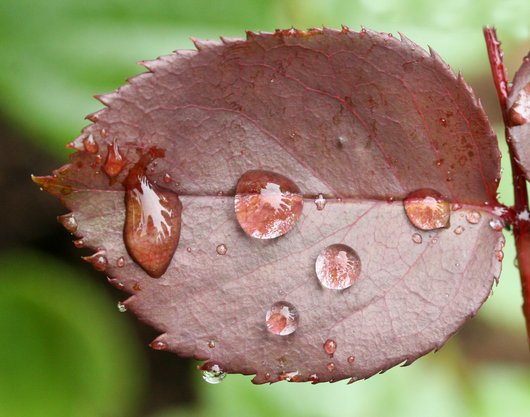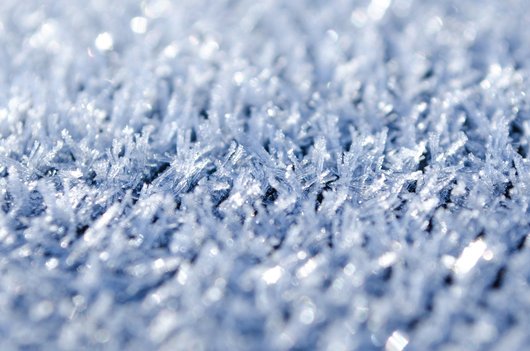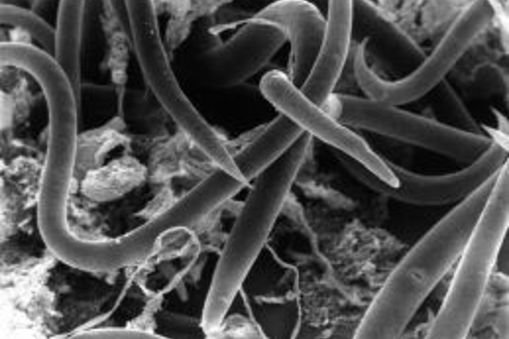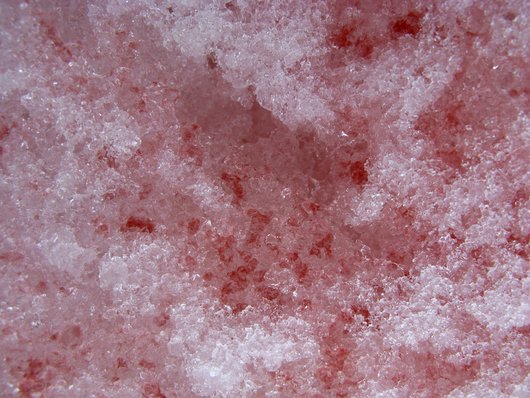Microbes in the cold
Some animals migrate away from the cold. Others are actually adapted to low temperatures. Microbes, too, are found in snow and ice. Many different species have specially adapted to survive in the cold.
 The invisible world
The invisible world
Some animals migrate away from the cold. Others are actually adapted to low temperatures. Microbes, too, are found in snow and ice. Many different species have specially adapted to survive in the cold.
Like raindrops, snowflakes are created by water molecules clustering around a nucleus. This nucleus can be a particle of soot or dust, but in the vast majority of cases it is a bacterium of the species Pseudomonas syringae. These organisms are carried into the air as moisture evaporates from the leaves of plants. Water molecules then cluster around special proteins on the surface of the bacterium. If the temperature is low enough, these will form enormous ice crystals. Nowadays, P. syringae is used to create artificial snow on ski slopes.

Freezing water is often lethal to cells. Water expands as it freezes, and the resultant pressure causes the cell to burst. Even if a cell manages to remain intact as it freezes, the cell membrane can still be punctured by microscopic ice crystals as the organism thaws out. To protect themselves from these effects, many microbes produce antifreeze proteins. These molecules bind to microscopic ice crystals, preventing them from clustering together to form larger crystals. In this way they lower the water’s freezing point, causing it to remain liquid even at -18°C.

The nematode Panagrolaimus davidi occurs mainly along the coast of Antarctica, and can withstand temperatures as low as -80°C. It is one of the few organisms that can survive the freezing of its internal tissues. Even if more than 80% of the moisture in its cells freezes, this will not kill the nematode. Molecules of trehalose (a type of sugar) prevent cracks forming in its cell membranes. It also has antifreeze proteins, to ensure that the water does not recrystallize as the nematode thaws out.

High in the mountains and along stretches of coast where there is snow cover throughout the year, you sometimes find “watermelon snow”. This pinkish-red snow actually does smell a little like watermelon. It derives its colour and odour from the alga Chlamydomonas nivalis. While they are green in colour, these algae also contain astaxanthin, a red pigment. They produce this pigment to protect themselves against intense UV radiation. Unlike other freshwater algae, C. nivalis really thrives in extremely cold environments.

Extremophiles are organisms that thrive under extreme conditions. Conditions that would kill a human in less than a microsecond. Most extremophiles are microorganisms. These include fungi, algae, bacteria and especially archaea. The word “extremophile” comes from the Latin “extremus” (extreme) and the Greek “philia” (loving). Extremophiles that live at extremely low temperatures are called “psychrophiles”. Some microbes can survive in the coldest region on Earth. At the extremophile exhibit in Micropia you can find out all about them.
